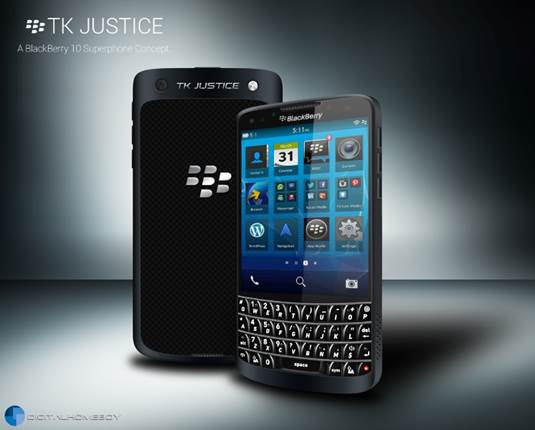The mobile sector is developing at
break-neck speeds. We consider a current ‘also ran’
Recent history hasn’t been too kind to the
company millions known as the developer of the BlackBerry range of smartphones.
Despite Research In Motion (RIM) doing much of the hard work and development
required to establish the technology fuelling demand within the current,
burgeoning, smartphone market, during the past couple of years it seems to have
lost its edge. It has certainly lost ground to multi-touch devices, and its
failure to innovate (whether perceived or real) has left the company in an
awkward spot, struggling in the wake of later entrants into the field. So how
did this all come to pass and what is Research In Motion doing about it?

The
PlayBook hasn’t made any great waves
Fail To Prepare?
“It’s not that RIM hasn’t seen trouble
coming, or failed to attempt innovation. It’s tried to expand its horizons, spotted
opportunities, developed and shipped new products. The problem is they simply
haven’t been received as well as it hoped they would be. I’m referring, of
course, to the original BlackBerry PlayBook, which endured a tepid reception at
a time, around March 2011, when Apple was launching its iPad 2 to huge acclaim.
Samsung’s new iterations of its Android-based Galaxy Tab, like the 10.1, felt
the effect of that Apple shockwave. Samsung’s releases were shunted back to
summer 2011 after Lee Don-Joo, the company’s vice president of mobile,
commented, “We will have to improve the parts that are inadequate .... Apple
made it [the iPad 2] very thin”

‘Leaked’
images of the BlackBerry 10 L (with keyboard) and N-series phones
Samsung’s delayed releases enjoyed a warm
reception before the light of patent disputes had fully penetrated into the
public domain. This was a time when any company that wasn’t Apple was in a
battle for second place and RIM was a particular late-comer. Android devices
were slow starters in the tablet market too, but the open source OS and ‘modder
community’ backing for devices running Google’s mobile OS buoyed hardware
manufacturers’ hopes. If you were with Android, the future looked good, but
companies outside of Apple who didn’t have the support of a global community
seduced by the plucky alternative to the closed iOS environment were in for a
rough ride.
Freefall
A device that suffered a similar fate was
the HP TouchPad. Announced in February 2011, three models of 16, 32 and 64GB
storage were released in July 2011. This journalist attended a meeting about
the launch, was sent a device to test and a week later was asked to return it.
HP, it turned out, had decided to discontinue its webOS devices, including the
TouchPad, which had received a mediocre reception. Sales of this tablet were so
below estimation it’s reported that Best Buy refused to buy any more stock.

A
purely concept image from www.digitalhomeboy.ca of what BlackBerry 10 phones
could look like.
What occurred thereafter was a fire-sale in
which everybody wanted a premium TouchPad at a criminally low price, indicating
that at the original pricing a well-made device just couldn’t compete with
Apple’s dominance or the faith of the Android-supporting community.

RIM
CEO Thorsten Heins: on a mission to return the company to influence
Clearly, RIM wasn’t the only tablet
manufacturer to suffer, with its devices running the uninspiring BlackBerry
Tablet OS, but at this point HP learned a lesson and changed tack. Claiming it
would keep options open for webOS, HP decided to fulfil existing TouchPad
orders, with retailers to continue the discounts. In summer 2011, the majority
of TouchPad owners were likely busy wiping away webOS and installing Android
onto their devices, but now the company is officially behind Windows 8, with
more devices in the works.
Terminal Velocity
Any aspirations for an HP webOS tablet fell
flat, and the company defaulted to the tablet OS newcomer, Windows 8. Yet RIM,
after its own uninspiring entry into the tablet market, resisted and continues
to resist, moving forward with its own Tablet OS.8 Android, iOS and Windows are
the OSs most users in the space are talking about, but RIM sticks to its guns.
Which is fine, if you’ve some wiggle room in which to use them. Unfortunately,
RIM’s recent financial reports don’t provide much happy reading.
The last three fiscal reports detail a
challenging time for the company. The Q4 fiscal report for 2012 was wounding.
RIM’s revenue was $4.2 billion, with a net loss of $125 million. This, tied in
with a dip in the selling of units, didn’t make for good reading. The good news
was that the PlayBook range shipped around 500,000 units, up from 150,000 in Q3
2012 fiscal reports. However, worse news was just a quarter away. Q1 2013
fiscal reports saw revenue drop to $2.8 billion, and a huge net loss of $518
million. RIM shipped just 260,000 PlayBooks over the quarter and 7.8 million
BlackBerrys, compared to the 500,000 PlayBook figure above and 11.1 million
BlackBerrys.
The kicker was that there was no relief to
come from any soon-to-be released BlackBerry 10 products. No reinvigoration,
and no full-touch product for RIM to engage the smartphone buying public with.
BlackBerry 10 was being pushed back to a release in the first calendar quarter
of 2013. In regards to that news, CEO Thorsten Heins said, “RIM’s development
teams are relentlessly focused on ensuring the quality and reliability of the
platform, and I will not compromise the product by delivering it before it is
ready.”
Sounding rather like it was Heins’s own
personal mission to improve the company fortunes, the reasoning was still sound
and the ethic commendable. Panicking and rushing out a product could hurt the
company even more in the long run. Not to put too much pressure on future
releases but to regain interest, any upcoming products need to be the best and
most interesting they can be. So if consumers need to wait a little, they need
to wait a little. RIM’s recent financial history doesn’t make for great
reading, but that staggering $831m loss – the first Q1 loss since 2004 - is as
bad as it gets.